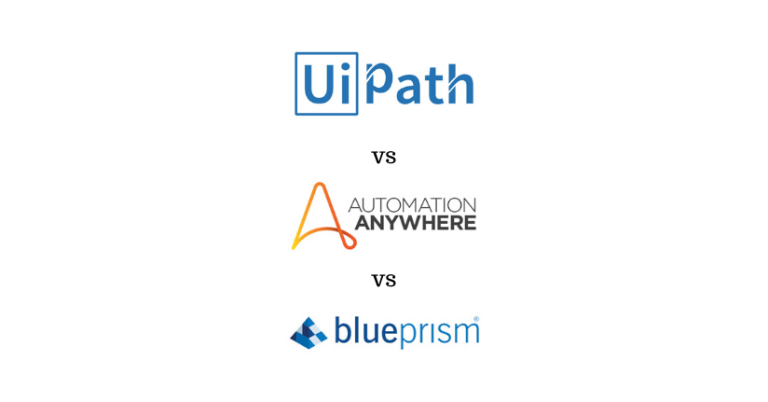Love them or hate them, chatbots are here to stay.
Today’s chatbots have become extraordinarily popular due to advancements in machine learning and natural language processing (NLP).
They are smarter, more responsive and more useful – and most likely we’re likely to see even more of them in the years to come.
In this post, we’ll be exploring why chatbots have become so popular, as well as the wider, often-unspoken impacts on how we communicate, do business and interact with one another online.
Before we get into that, let’s look at what chatbots really are, how they actually work and how they are different from conversational ai-powered chatbots.
Table of Contents
What is a chatbot?

A chatbot is a rule-based software designed to automate certain interactions with humans.
They only serve a specific purpose and are meant to follow a certain flow, making them relatively easy to build.
There is only limited room to maneuver for the course of the conversation.
In practice, a chatbot gives fixed answers to questions rather than having a real conversation with a human being.
A chatbot can be a suitable replacement or supplement to the FAQ section, answering questions about an order or the accessibility of customer support, for instance.
What is conversational ai?

Many companies see Conversational AI as just another type of chatbot, yet there is much more to it.
Conversational AI is the set of technologies behind automated messaging and speech-enabled applications that offer human-like interactions between computers and humans.
Conversational AI can communicate like a human by recognizing speech and text, understanding intent, deciphering different languages and responding in a way that mimics human conversation.
A study by Garnter suggests that by 2021, 15% of all global customer interactions will be handled entirely with artificial intelligence.
Chatbots vs conversational ai chatbots
Conversational AI chatbot relies upon natural language processing (NLP), automatic speech recognition (ASR), advanced dialog management, machine learning (ML) and is able to have what can be viewed as actual conversations.
It also uses deep learning to continually improve and learn from each conversation.
It is more flexible and can jump from one topic to another, much like actual human conversations do, unlike traditional chatbots, which are limited to pre-defined scripts and rules and cannot respond with anything that was not originally inserted into its conversational flow.
| Chatbot | Conversational AI Chatbot |
| Only uses NLP | Uses both NLP and Machine Learning |
| Can be used as a chat interface only
|
Can be deployed on websites, voice assistants, smart speakers and call centers |
| Navigational focused | Dialogue focused |
| Pre-determined scripted conversational flow | Can monitor data, intent, & even initiate conversation; is contextually aware! |
| Integrates with backend systems of record | Integrates with Big Data sources |
| User-initiated queries with automated responses and conversational menus | Personalized based on user profile and past user behavior |
Why should businesses invest in conversational ai?

Conversational ai is on the cusp of a significant revolution. There are businesses of all types that are investing heavily in this innovative technology. Let’s look at some of the top reasons why brands should not resist their urge to invest in conversational AI and its adjacent technologies.
1. Hold personalized conversations
Today customers expect an omnichannel experience and conversational AI can help deliver at scale. Regardless of a customer moving from a messenger app to a live chat to social channels, the AI-based solution can personalize the experience, follow the customer across channels and even understand context and history to offer a truly seamless customer service experience.
2. Manage a spike in customer calls
Customer service departments are under tremendous pressure to deliver a consistent, superior customer experience.
AI-powered chatbots and voice assistants take care of call spikes and assuage customer anxieties satisfactorily with quick resolutions to their queries.
With conversational AI, it is possible to categorize calls based on what the customer is looking for, their past interactions with the brand s well as their emotions, sentiments and intents.
Conversational ai makes it possible to route routine, transactional interactions to an intelligent virtual assistant, thus lowering costs from higher-cost agents while also empowering live agents to focus on higher-value conversations.
3. Deliver on the customer service promise
Customer experience is the single biggest brand differentiator. Brands that fail to deliver an optimal customer experience will likely deliver less than optimal returns regardless of having a world-class product.
Conversational AI helps deliver on this promise by understanding the intent, emotion and sentiment with self-service, thus increasing first contact resolution (FCR) and not wait in line to be resolved by a live agent.
Advantages of conversational ai

Conversational AI platforms can be leveraged across various disciplines, including lead generation, demand generation, customer service and so on.
AI can help the sales teams in their upsell and cross-sell efforts.
Consider some examples of how businesses are using Conversational AI to derive business value.
1. Sales and marketing efforts
With increased competition and customers more demanding than ever before, conversational AI can drive better targeting and conversion for marketing and sales teams.
AI-based solutions can better understand the buyer profile, their social media preferences, roles and so on, to offer relevant content when they visit their website and also engage at the right time to help increase conversions.
2. Process automation
Automation powered by artificial intelligence can execute mundane, repetitive tasks with utmost efficiency.
This way the costs are lowered and the time taken to accomplish such tasks is greatly reduced.
Today there is also a need to automate real-time conversations, so agents get a head start in servicing customers.
3. Improved decision-making
Humans make errors, yet machines can do the same task again and again with the same level of efficiency and accuracy.
Conversational ai can help us make better decisions.
Machines give us a better context of the problem, more information and a deeper insight of the bigger picture.
Thus overall, conversational AI can help us take customer service to a higher level with better decision-making.
4. Augment agent capabilities
Conversational ai can augment agent capabilities with insights, knowledge bases, alerts and notifications so they can perform better at their jobs.
For instance, if a certain agent is going off course from the script, he might get an alert. If an agent forgets to disclose an important piece of information to the customer, then the conversational ai system working in the background can send him a notification.
Once the call is over, the conversational ai solutions can help to put together a neat summary highlighting the action items and deliverables.
5. Reduced query response time
Conversational AI technologies can reduce the response times to customer queries.
Queries could be coming in from a host of channels like social media, email, website chat, review sites, third-party aggregators and phone calls.
Managing these tasks might seem impossible for a human, but not for machines.
With the help of conversational ai solutions it is possible to read through thousands of emails, scan across the social media channels for customer queries, listen in on customer calls to make sense of customer tickets.
In short, there is centralized decision-making which is powered by conversational ai and this drastically reduces the query resolution time.
Ultimately what you have is happier customers, leading to more business eventually!
Omnichannel nature of conversational ai

Traditional chatbots are text-based.
Conversational AI is omnichannel and can be accessed and used through many different platforms and mediums, including text, voice, and video.
Common examples include digital assistants such as Cortana, Google Home and Siri, Amazon Alexa and Google Home.
According to a report from National Public Media, 24% of people over 18 own at least one smart speaker and there are around 157 million smart speakers in U.S. households. Smart speakers account for approximately 69% of voice assistant users.
The use of smart speakers has facilitated the use of conversational AI in the household.
According to Google, 53% of people who own a smart speaker said it feels natural speaking to it and many reported that it feels like talking to a friend.
Is the future conversational?

Although conversational AI came from chatbots and is unquestionably more advanced, chatbots will go on to fill specific needs and tasks.
Chatbots can prove sufficient for some SMBs (small-medium businesses) or large companies that want to fulfill a single task.
With continuous innovation in artificial intelligence, machine learning and natural language understanding, including OpenAI’s groundbreaking GPT-3 release, conversational AI will further evolve to become even more sophisticated.
What is clear, however, is that the demand for both solutions will proceed to skyrocket over the coming decades.
Chatbots are massively prevalent and utilized on a global scale with more than 300,000 individual chatbots deployed on Facebook and a market size that is expected to grow from $2.6 billion in 2020 to $9.4 billion by 2024.













